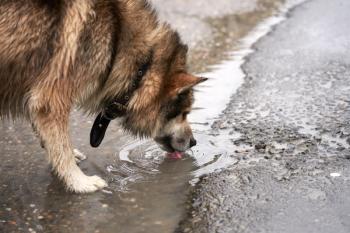
Livestock-Associated MRSA Transmission Between Humans and Pigs in Norway
Researchers analyzed all reported cases of livestock-associated methicillin-resistant Staphylococcus aureus (LA-MRSA) in pigs and humans in Norway from 2008 to 2014.
In a recent
MRSA has long been associated with hospital and healthcare settings; however, it has spread to other environments in the past few decades. For example, in the late 1990’s,
LA-MRSA is a global problem, with
For the MRSA CC398 pig cases, authors analyzed data and samples collected by the Norwegian Food Safety Authority (NFSA) during an extensive outbreak investigation of MRSA CC398 from 2013 to 2014. During the investigation, pig farmers completed questionnaires that included epidemiological information on demographics, herd characteristics (size and type of production), and pig trade. Information on human and animal contact tracing was also collected. NFSA obtained animal samples from pigs at 74 pig farms, and environmental samples from 5 slaughterhouses.
To evaluate human MRSA CC398 cases, authors analyzed epidemiological data collected from people who were occupationally exposed to MRSA CC398; this information, which included the date of MRSA diagnosis and the pig farm at which the person worked, was collected during the 2013—2014 outbreak investigation. Public health officials obtained samples from the anterior nasal cavity, throat, and skin (if skin lesions were present) from select household members of those who were occupationally exposed. Due to the fact that human MRSA carriage and infections are notifiable to the Norwegian Surveillance System for Communicable Diseases (MSIS), authors also analyzed data of human MRSA CC398 cases reported to MSIS. In total, data from 272 people were included in the study’s analysis.
All animal, human, and environmental samples were tested for MRSA using PCR. Whole genome sequencing (WGS) and phylogenetic analysis of MRSA CC398 were performed. Selected MRSA CC398 isolates from other European countries were included in the WGS and phylogenetic analyses.
From 2008 to 2014, 84 human cases of MRSA CC398 were reported in Norway, with the first human case reported in March 2009. Analysis of the outbreak investigation data indicated three distinctive outbreak clusters, with the first traceable to a MRSA CC398 pig case occurring in February 2013. Within the outbreak clusters, MRSA CC3398 was reported in 26 pig farms, 2 slaughterhouses, and 36 individuals; these 36 individuals had direct and regular contact with MRSA CC398-positive pigs.
Of the 84 cases of human MRSA CC398, 48 were not epidemiologically linked to the outbreaks. Isolates from these 48 cases were genetically distinct from those identified in the outbreak clusters, indicating, as the authors noted, “limited dissemination to the general [human] population.”
Authors pinpointed the index case in each outbreak cluster. Using contact tracing, authors identified three sow farms that supplied the pig farms at which the index cases were identified; in one of the clusters, the primary and index case farms were the same. Importantly, pigs at the farms involved in the outbreak investigation were not imported from abroad.
Twenty-eight foreign-born laborers worked at the farms investigated in the outbreak; two of these laborers were from Denmark. Interestingly, WGS data demonstrated genetic relatedness between outbreak isolates and MRSA CC398 isolates identified in Denmark.
Authors identified three probable routes of MRSA CC398 transmission and introduction to the farms within the outbreak clusters: trade of pigs, mutual use of workers or veterinary personnel, and livestock transport vehicles.
The collection of human samples was believed to be a study limitation, given that only the household members of those who were occupationally exposed to MRSA CC398 were screened. In addition, genetic relatedness was explored more extensively with isolates from Denmark than other countries.
Given the study results, authors believe that “human transmission of LA-MRSA should be regarded as the most important route of introduction into the Norwegian pig population.” Due to the fact that pig trade was shown to be a main route of MRSA CC398 transmission after it was introduced onto a farm, authors suggested limiting the amount of pig trade to prevent interfarm transmission of MRSA CC398.
Dr. JoAnna Pendergrass received her doctorate in veterinary medicine from the Virginia-Maryland College of Veterinary Medicine. Following veterinary school, she completed a postdoctoral fellowship at Emory University’s Yerkes National Primate Research Center. Dr. Pendergrass is the founder and owner of JPen Communications, LLC.
Newsletter
From exam room tips to practice management insights, get trusted veterinary news delivered straight to your inbox—subscribe to dvm360.




